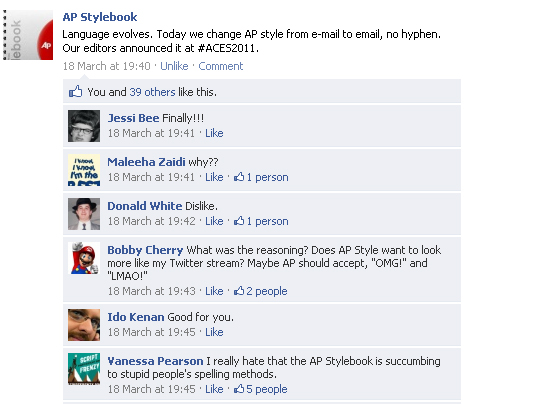How e-mail became email
I was interested to see that AP news agency has just changed its official spelling of what was previously e-mail to email. Surely nobody was still writing out e-mail? As far as I was concerned, ‘e-mail’ had long disappeared down the language chute along with ‘Web site’ and ‘cell phone’. Apparently not.
The decision to remove the long-debated hyphen at AP’s spelling headquarters was received with both delight and derision on its Stylebook Facebook page. While some – like me – wondered what had taken so long, others slated AP for ‘succumbing’ to the masses. One angry comment read: “What was the reasoning? Does AP Style want to look more like my Twitter stream? Maybe AP should accept, "OMG!" and "LMAO!"”

Fast mover
Lest we forget, the word email is an abbreviation of electronic mail. According to Wikipedia, electronic mail was launched in 1965. Now, the Oxford Dictionary lists the term ‘email’ as of late 20th century origin, so that makes its transformation – from two words of 15 letters down to one word of five letters – a pretty speedy one.
Nonetheless, it’s one of the most important words to have arisen from the digital age. I’m quite sure that now it’s found a stable nickname, it won’t be going any further. 'Eml' doesn’t have quite the same clarity as 'msg'.
Happy marriage
Personally, I have never been a great fan of the hyphen arrangement when it comes to future nouns. By using a hyphen in the first place, we all know that the conjoined words will probably end up as one eventually, so why not just ditch the transitional period? A forced marriage between words isn’t doing anyone any harm, is it now?
On that note…
Byefornow!




2 Comments
Post new comment